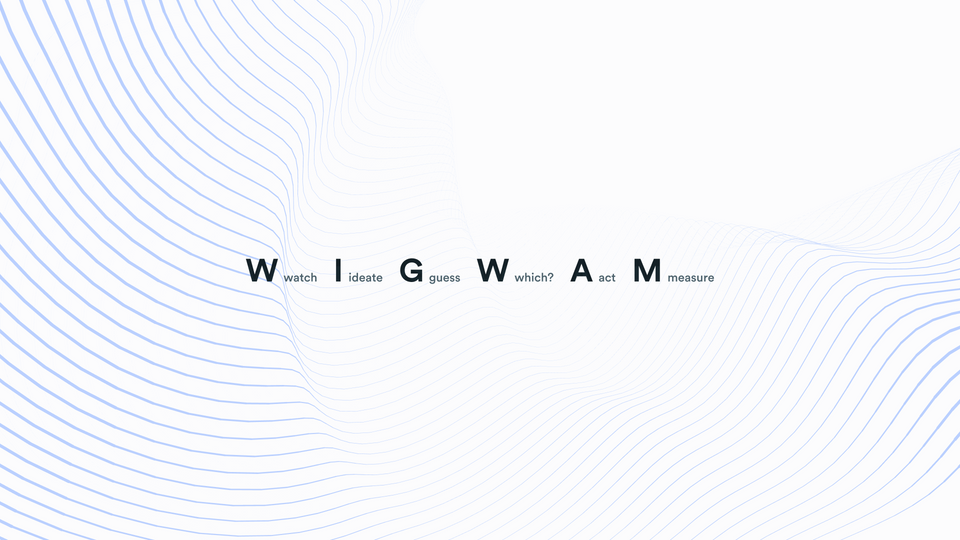WIGWAM: The method to improve anything over time.

As a product designer, your job is to create products that people love to use. But how do you know if you’re on the right track? How do you know if your product is meeting the needs of your users? The answer is simple: iteration.
Iteration is a process that you can use to improve anything over time. It’s a way of testing, refining, and improving your ideas until you arrive at the best possible solution. The iteration cycle has six major steps: Watch, Ideate, Guess, Which?, Act, and Measure. Short for WIGWAM.
Watch: What works? What doesn’t?
The first step in the iteration cycle is to observe what’s working and what’s not. This means looking at your product through the eyes of your users. What are they doing? What are they struggling with? What features are they using the most? What are they ignoring?
Ideate: What could you improve? What are your options?
The second step is to generate ideas for how you could improve your product. Brainstorm with your team, read customer feedback, and research best practices in your industry. This is the time to be creative and think outside the box.
Guess: Based on experience, which idea do you think will make the biggest impact?
The third step is to make an educated guess about which idea will have the biggest impact. This is where your experience and knowledge come into play. You’ll need to consider factors like feasibility, cost, and the potential impact on the user experience.
Which?: Decide which change to make.
The fourth step is to make a decision about which change to make. This is where you’ll need to weigh the pros and cons of each option and choose the one that you believe will have the biggest positive impact.
Act: Make the change.
The fifth step is to implement the change. This could involve designing a new feature, changing the layout of your product, or tweaking the wording of your copy. Whatever the change is, make sure you do it thoroughly and with attention to detail.
Measure: Was it positive or negative? Should you keep it or go back?
The final step is to measure the impact of the change. Did it have a positive effect on the user experience? Did it increase engagement or revenue? If the change was successful, keep it. If not, go back to the ideation stage and try again.
Iteration is a cycle. Once you do it, you repeat it.
The more clearly you define what you’re after with each iteration, the better the feedback and the value you’ll receive from each cycle. This means setting clear goals and objectives, defining success metrics, and establishing a timeline for each iteration.
The more you iterate, the better your product will become.
FIN.